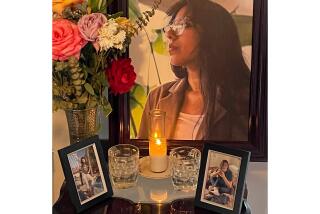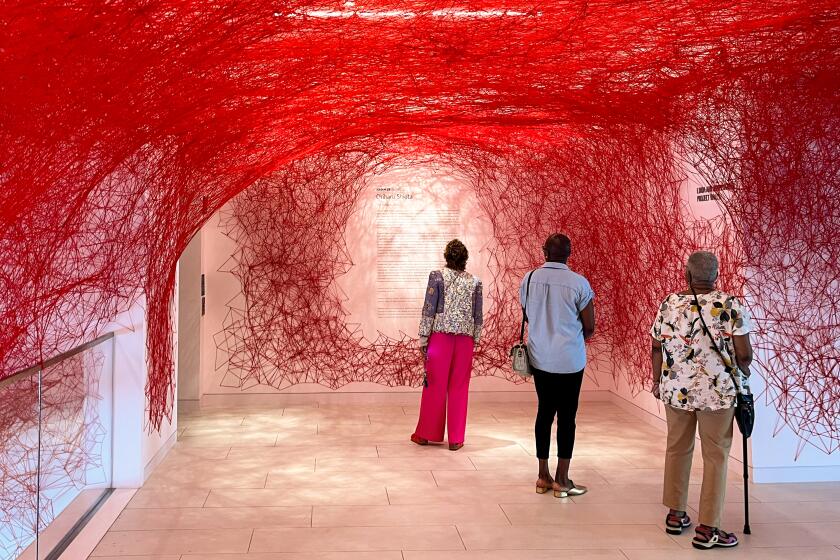An Eye for the Images of L.A. Communities
Looking at Los Angeles can be engrossing. For all the permanence of its streets, freeways, bridges and buildings, the city is very evanescent.
To be sure, the engineering and architecture appear solid--each element rooted for the decades, for better or worse, in concrete and steel. But the totality of the elements, the city’s so-called urban design, is ever changing, and very much an imperfect art.
That is how it has seemed to me at least, these last few weeks as I searched out select structures to comment on in these columns. Engaging me more and more as I wandered farther and farther across the city sprawl was not the engineering and architecture, but the urban design.
What I found myself looking for were clues to what distinguished each area--what was its visual quality, its public image. In short, what was its “imageability,” a word the late noted planner Kevin Lynch liked to use to describe how easy it was to “read” and identify a particular community.
But while Boston, where Lynch lived and practiced, may have a high “imageability”--as do, say, sections of San Francisco--what about Tarzana, Playa del Rey, East Los Angeles, Monterey Park, Claremont or Monrovia, to name a few areas I recently visited.
To be sure, this “imageability” I was looking for is based on transitory perceptions. I don’t live in these communities--in effect, I’m just a tourist with an interest in design and a love of cities, experiencing for the most part a community’s publicly accessible spaces, its streets, beaches, parks, playgrounds, restaurants and stores.
So there I was a few weeks ago in Tarzana, checking out a new mini-mall and a remodeled car wash on Ventura Boulevard (which I wrote about last week), and thinking there must be more to the community than a convenient but crass commercial strip.
What I did find off the boulevard on a succession of curving streets was a tidy residential community of what seemed to be comfortable, well-maintained and well-landscaped houses. Behind those houses I presumed there were swimming pools, barbecue pits and jungle gyms, where the community’s true spirit is displayed.
But for me the public image of Tarzana that unfortunately remains is the baleful blur of Ventura Boulevard.
My image of Playa del Rey, perched at the water’s end of Culver Boulevard, always had been of a comfortable melange of modest stores and restaurants, nondescript condos, a few funky houses, a pleasant park and a marvelous broad beach. It is a nice place to bike to.
But recently, while looking for a singular design there by an architect of note, I drove up a relatively new 81st Street and thought I was in the far reaches of a Conejo Valley tract development. Looking moderately bloated, most of the recently constructed houses just do not capture the spirit of this vestpocket beach town.
Still, there is the beach, which for me remains the community’s dominant image. Happily, when in Playa del Rey I tend to look out at the water and not back at the structures abusing the bluffs.
On the way to Monrovia the other day I turned off the freeway and cruised through East Los Angeles and Monterey Park. The El Mercado at 3425 East 1st St. seemed a little worse for wear. More spirited was Whittier Boulevard, where a landscaping and rehabilitation program is struggling to take root. But a pervasive image escaped me.
To the northeast, Monterey Park with its sprawl and signage is beginning to look more and more like a suburb of Hong Kong, and appears very much in the process of change. The Saturday traffic was a test of nerves.
Some old images of the community do remain, like Cascades Park off Atlantic Boulevard at El Portal Place. Its fountain still serves as a backdrop for photographs of wedding parties, frequently Asian and Latino.
As for Monterey Park’s most interesting “community” space, to me it was not the streets or parks, but select restaurants. Each time we have eaten there, be it a quick lunch or a weekend dinner, the restaurants have taken on the congeniality of small public plazas.
This spirit was very much aided by the fact that children appeared not just tolerated by the managements, but welcomed and fussed over. It is marvelous the way children can energize a space, and lend it a welcomed image.
I eventually did make it to Monrovia and, on another day, to Claremont. Reports on these two oases of “imageability” in the San Gabriel Valley will have to await other columns.
More to Read
Start your day right
Sign up for Essential California for news, features and recommendations from the L.A. Times and beyond in your inbox six days a week.
You may occasionally receive promotional content from the Los Angeles Times.






